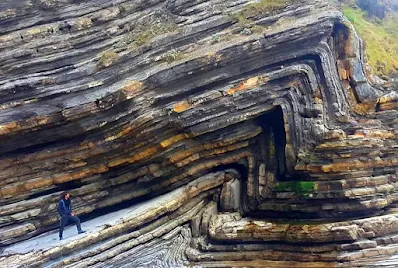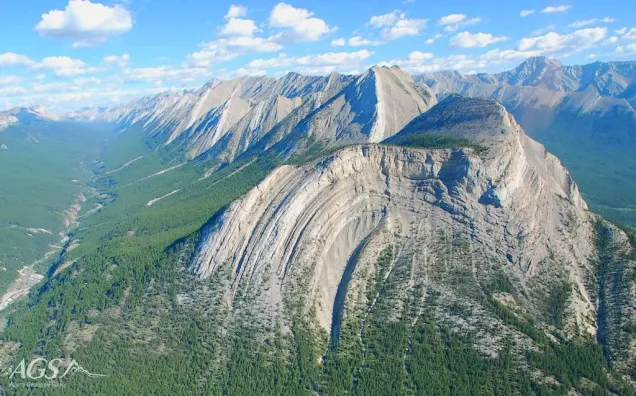10 Amazing Geological Folds You Should See
Folds are some of the most common geological phenomena you see in the world – a geological fold occurs when planar (usually sedimentary) layers are curved and/or bent, permanently deformed due to outside pressure. Folds’ sizes can vary from microscopic to mountain sized.
The folds of the rocks at position Apoplystra
 |
| Photo credit: © by G. Shuttleworth. |
The folds of the rocks at position Apoplystra, between the village of St. Paul and the sandhills (Greece) are remarkably colorful.
Slump Folds at Antipaxos Island in Greece
 |
| Photo credit: © Maki Doukouros |
Slump Folds, slump-overturned folds, are a type of fold that forms in unconsolidated sediments when they are subjected to gravity-driven mass movements. Slump folds are typically found in submarine slopes and other areas where unconsolidated sediments are deposited in steeply dipping layers.
Oligocene carbonate sediments exposed on the Ionian Island of Antipaxos, Greece.
The Sideling Hill, Maryland, USA
 |
|
Photo credit: Schnabel Engineering, Inc. |
A syncline is a fold in which the layers of rock are curved downward, with the youngest rocks at the center.
The Sideling Hill rock cut is famous for its impressive geologic display, exposing layers of sedimentary rock folded in a broad syncline.
Folded Carbonates flysch, France
 |
| Photo credit: Thibault Cavailhes |
Chevron folds are a type of fold that forms when layers of rock are subjected to intense compressional forces. They are characterized by their V-shaped cross-section and their straight limbs. Chevron folds are typically found in areas of active tectonics, such as mountain belts and convergent plate boundaries.
Folded Carbonates flysch in Basque Country, France.
The Chevron folds, North Cornwall, United Kingdom
 |
| Photo credit: Nik on Flickr |
Chevron folds are a structural feature characterized by repeated well behaved folded beds with straight limbs and sharp hinges. Well developed, these folds develop repeated set of v-shaped beds. They develop in response to regional or local compressive stress. Inter-limb angles are generally 60 degrees or less.
Mount Head, Canada
 |
| Photo credit: ZME Science |
Located in the Highwood River Valleysouth of Head Creek and north of Wileman Creek. Highwood Range, Kananaskis Park, Alberta
Richat Structure, Sahara desert of Mauritania
 |
| Photo credit: Viva NOLA on Flickr |
The Richat Structure in the Sahara Desert of Mauritania. Long considered to be an impact structure, it is now believed by most to be a structural dome. The Richat Structure is a deeply eroded, slightly elliptical dome with a diameter of 40 km. The sedimentary rock exposed in this dome ranges in age from Late Proterozoic within the center of the dome to Ordovician sandstone around its edges
The Folded layers in valley in Namibia
Geologic Folds in the Lower Ugab valley in Namibia.
Folded beds at Eilat mountains, Israel
 |
| Photo Credit: Iyad M. Swaed |
Some seriously folded and faulted rocks at Eilat mountains, southern Israel.
Folded banded iron formation, Minnesota
 |
| Photo Credit: Callan Bentley/American Geophysical Union |
Folded banded iron formation (BIF) is a distinctive type of sedimentary rock composed of alternating layers of iron oxides and iron-poor chert. These layers are often folded and contorted due to the intense tectonic forces that have shaped the Earth's crust.
Folded banded iron formation with shale interbeds, exposed in a pavement near Soudan, Minnesota.
Read also: The Terminology of a Fold
See also: Types of folds with Photos




%20(1).webp)






